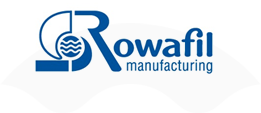Our catalogue:
Rotonic Series
Maybe you have already red our brochure of the Rowafil systems, but allow me to briefly describe the process.
- The waste water from the wash bay is collected in the wash bay gully and flows from there into a sludge pit.
- From the sludge pit the water will overflow into the pump pit, which has about the same size as the sludge pit. In this pit the grinder pumps (this is a submersible pump with knives at the bottom) are placed.
- The grinder pump transports the wastewater to the recycling unit. First the water passes through the rotation bioreactor for breaking down all chemicals and oils.
- Finally the biodegraded water will pass on to the plate separator for separation of all left particles in the water. A plate separator only increases the sedimentation process of particles in a relatively small unit. The sediment will flow every night back to the sludge pit or optional into the sewer.
The end result is clean and clear water suitable for reuse in the wash bay, without any negative effect on the washing result compared to using fresh water. The clean water storage should have at least a capacity equal to 50% of the average hour consumption of water by the washing machine.
If a local situation with existing pits and / or interceptors deviates from the advised situation as indicated above, details should be sent to us to study for a full engineering into the most ideal installation based upon the given data.
Extra information
Explanation of the rowafil biological water reclaim process
Most systems on the market are the so-called waste collectors, like sand and carbon filters or filter bags and cartridges. In these systems the waxes, oils, detergents and other organic materials are “collected”. This process requires regular replacement or changing of the filters or continues until the filters become blocked.
Another type being marketed is ozone based equipment, which is used to kill bacteria to avoid odor, but still the system “collects” dirt until its filters are replaced or blocked.
If the oxygen level of the water is too low, then anaerobic bacteria will develop and start to breakdown the pollution. The result of this reaction is odour (the hydrogen sulphide gasses from anaerobic breakdown).
Usually car wash owners try to resolve their odour problem by dumping chlorides or peroxides in the water, or inject Ozone to kill bacteria. This is a never-ending cycle as long as the oxygen level in the water is too low.
However if the oxygen level is adequate, aerobic bacteria will develop and consume all organic material in the wastewater without odour. To do that most efficiently, we provide the conditions the bacteria needs (proper environment) and tools encourage their growth.
Instead of fighting the laws of nature, we exploit them by continually infusing air into the waste water, we give the aerobic bacteria optimal conditions to reproduce and consume (remove) organic materials from the waste water stream, thereby making the water cleaner and free of offensive odours.
The circumstances and chemicals influence the development of the desired aerobic cultures. Together with our SR20 (micro and macro-nutrients) the maximum positive biological conditions are being created. Under these conditions, the bacteria are able to breakdown most of the waxes, detergents and oily emulsions from the car wash.
Because most waxes and detergents are biodegradable they will be transformed into CO2 (carbon dioxide) and H2O (water) and biomass (cell growth and multiplication).
Suspended particles with a size as small as 5 micron (0,005 mm) are separated in the double vortex hydrocyclones.
With electrical power available to circulate the water, inject the correct air volume and feed the bacteria, nature will do the rest.


